Throughout a woman’s pregnancy, her baby undergoes many stages of development before birth. Among the milestones that indicate life is the heartbeat. But when does a fetus have a heartbeat?
What to Know about Fetal Heartbeat Development
Through the use of ultrasounds, modern science can detect the waves of the baby’s heartbeat as early as three weeks after fertilization. Although the child’s organs have not yet fully formed, soon after this three-week mark the heart beats about 110 times per minute.
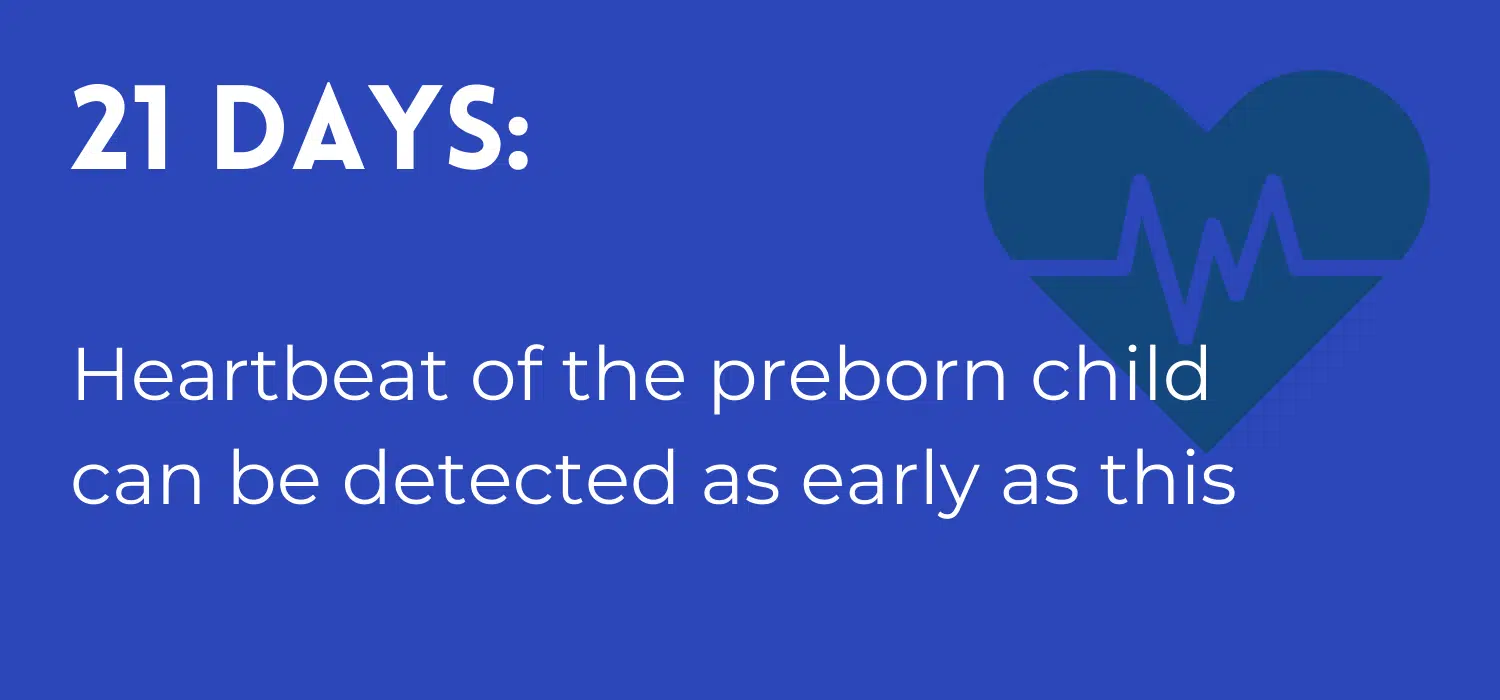
A fetal heartbeat can be distinguished from the mother’s because it is often much faster than hers. Listen here to experience firsthand how the fetal heartbeat develops throughout a woman’s pregnancy.
The Developing Heart and Heartbeat
According to Lumen Learning, the heart of a preborn baby:
“…originates about day 18 or 19 from the mesoderm and begins beating and pumping blood about day 21 or 22. It forms from the cardiogenic region near the head and is visible as a prominent heart bulge on the surface of the embryo…. The primitive heart begins to form an S shape within the pericardium between days 23 and 28. The internal septa begin to form about day 28, separating the heart into the atria and ventricles, although the foramen ovale persists until shortly after birth. Between weeks five and eight, the atrioventricular valves form. The semilunar valves form between weeks five and nine.”
This miraculous growth proves the existence of a human being who is not a part of his mother but who is his own person and reliant upon her for sustenance.
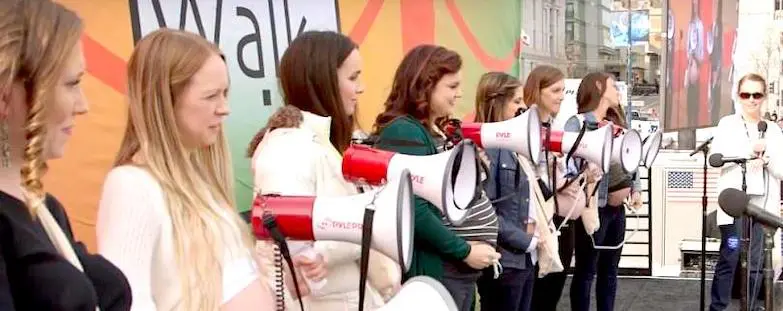
Walk for Life 2019/Courtesy: Lifesite – Women Employ Megaphones to Project Fetal Heartbeats
Once the heart begins its detectable beat, it is obvious that it beats much faster than an adult’s. What to Expect’s article for expectant mothers explains the varying speeds at which the baby’s heart beats. By six weeks, the heart is beating 110 times a minute. Just two weeks later, it will rise to between 150 and 170 times a minute.
By weeks nine or 10, the baby’s heart will beat about 170 times per minute. At this point, it begins to slow down. Then around week 20, it’ll go to about 140 beats per minute.
During labor, the baby’s heart rate can go anywhere from 110 to 160 beats per minute, with normal variations on either side.
How Does a Doctor Detect a Baby’s Heartbeat?
According to Johns Hopkins, there are two kinds of fetal heart monitoring: external and internal.
When a doctor listens externally, one of the tools he uses is called a Doppler ultrasound device. This method listens to a baby’s heartbeat through the mother’s belly. A doctor will listen during routine prenatal visits and if he suspects something is wrong. In addition, when a woman is in labor, the baby’s heart rate will also be monitored continuously using what’s called a transducer—or ultrasound probe—that’s fastened to the woman’s belly. This helps the doctors determine if the baby is experiencing any distress.
If the doctor is concerned about the baby’s well-being during labor, he can monitor the baby’s heart rate by placing an electrode directly on the baby’s scalp. The Johns Hopkins article states that this electrode is connected to a monitor and “gives better readings because things like movement don’t affect it. But it can only be done if the fluid-filled sac that surrounds the baby during pregnancy (amniotic sac) has broken and the cervix is opened. Your provider may use internal monitoring when external monitoring is not giving a good reading. Or your provider may use this method to watch your baby more closely during labor.”
Obviously, this step is only taken if the doctors have a grave concern about the baby’s condition.
Is It Really a Heartbeat?
Some abortionists, such as Nisha Verma, state that the baby’s heartbeat isn’t actually a “real” heartbeat because the valves that open and close to create the sound of a heartbeat don’t form until the 9th or 10th week. Verma states that in a younger baby, “the flickering that we’re seeing on the ultrasound that early in the development of the pregnancy is actually electrical activity.”
Further, mainstream media has jumped on the heartbeat bandwagon, claiming that the sound of a heartbeat is manufactured. In an article from NBC, the author paraphrases from and then quotes Verma, saying, “‘In fact, the sound pregnant people hear during ultrasounds at six weeks is entirely manufactured by the ultrasound machine,’ Verma said. ‘It’s an electrical pulse that’s translated into the sound we’re hearing from the ultrasound machine.'”
It’s important to understand what an ultrasound does. According to Johns Hopkins:
Ultrasound uses an electronic wand called a transducer to send and receive sound waves. … The transducer is moved over the abdomen, and sound waves move through the skin, muscle, bone, and fluids at different speeds. The sound waves bounce off the baby like an echo and return to the transducer. The transducer converts the sound waves into an electronic image on a computer screen.
The ultrasound uses sound waves to create an image. And one of the things that the ultrasound detects is the baby’s heartbeat. If you have ever seen a baby in an ultrasound, you will know that, in addition to hearing the heartbeat, you can also see the heart pulse. So, while the ultrasound translates the movement into sound waves, that doesn’t mean the sound is created out of nothing. It’s created based on movement – in this case, the beating of the heart.

Woman holding an ultrasound image of her baby
In addition, we see that as far back as 1992, researchers examined fetal heartbeat and found that “cardiac activity is present in normal embryos before it can be detected on ultrasound,” which means the heart is beating long before we can hear it.
Throughout pregnancy, a baby is growing and developing at a phenomenal rate. This growth and development could only happen in a living being.
And, as we can hear in this video, a baby’s heart is beating regardless of the heart’s stage of development. The heart simply hasn’t developed to its final stage. But that doesn’t mean the baby is not alive. On the contrary, the baby grows exponentially every day!
The facts are irrefutable. A baby is created at fertilization – the beginning of life. The formation of the human heart, manifested by its heartbeat, is a clear indicator that another human being is present in the mother’s womb. This fact is what the heartbeat bills are attempting to teach and protect. They’re not stating that human life beings at the first detection of the heartbeat. Rather, they are stating that the discovery of the heartbeat shows that life is already present.
Heartbeat Bills
Several states have enacted laws to protect some babies after a heartbeat is detected. Other states have enacted laws to protect some babies, such as those diagnosed with Down syndrome or babies after 20 weeks’ gestation.
Despite this effort, these laws are still flawed, because they do not protect all babies or in all circumstances. We know that a good pro-life law must protect all babies, as the Catechism of the Catholic Church emphatically teaches an abortion is never permissible (2271).

Alabama Signing of Heartbeat Bill by Gov. Kay Ivey, 2019 – Courtesy: www.maxwell.af.mil
Abortion and Two Questions about Life
The debate on whether abortion is an acceptable medical procedure essentially comes down to two questions:
- When does human life begin?
- Is it permissible to kill an innocent life?
Science answers the first. A human being begins life at the moment of fertilization, and what follows after that is simply a developing human being, not just “fetal tissue,” a “clump of cells,” or “potential life,” as some pro-abortion activists and doctors say. Life begins at conception and carries through until natural death.
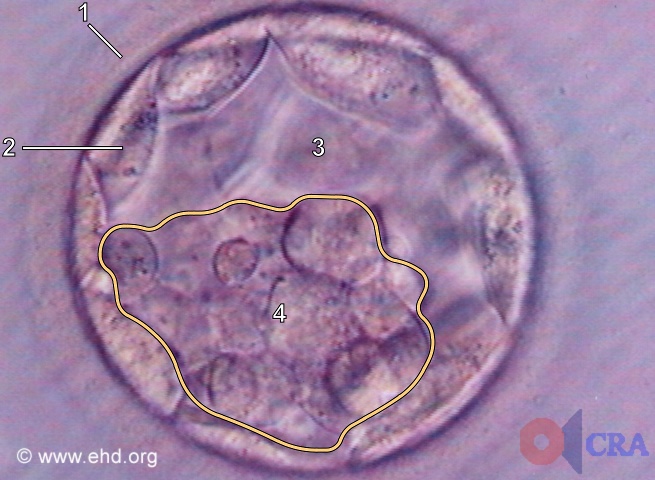
Early fertilized egg, or blastocyst/Courtesy EHD.org
The decision of the Supreme Court in Roe v. Wade doesn’t define where life begins but indicates that we can tell that there is life inside the womb once the child has “viability” (i.e., the child is able to live outside of the womb). There are many problems, however, with stating life begins with viability, including that even the date of viability is not a hard line: preemies are being delivered earlier and earlier and surviving.
Now that we have established that a human being is created at fertilization, natural law answers the second question. It is neither right nor just to kill an innocent person—and this is something people fundamentally understand.
Conclusion
A human being’s life begins at fertilization, and from there the child begins to develop. Abortion is never the answer, as it takes away the life of an innocent person. Detecting a child’s heartbeat is significant proof that a separate human being is present and growing in the womb.
Heartbeat bills attempt to reduce the number of abortions in the US and call to people’s minds important questions considering life and the family. Further, they help our society move one more step toward understanding the humanity of the preborn baby.
Hopefully soon, people will understand the humanity of the baby and they will want to protect it. And then we will live in a country that can answer the question Does one really have a right to take away another’s life? with an emphatic “no.”
This article was originally published by Gail Peterson in May 2019 and updated in April 2023 by Susan Ciancio.
Gail Peterson holds a BA in Mathematics from Christendom College in Front Royal, VA.


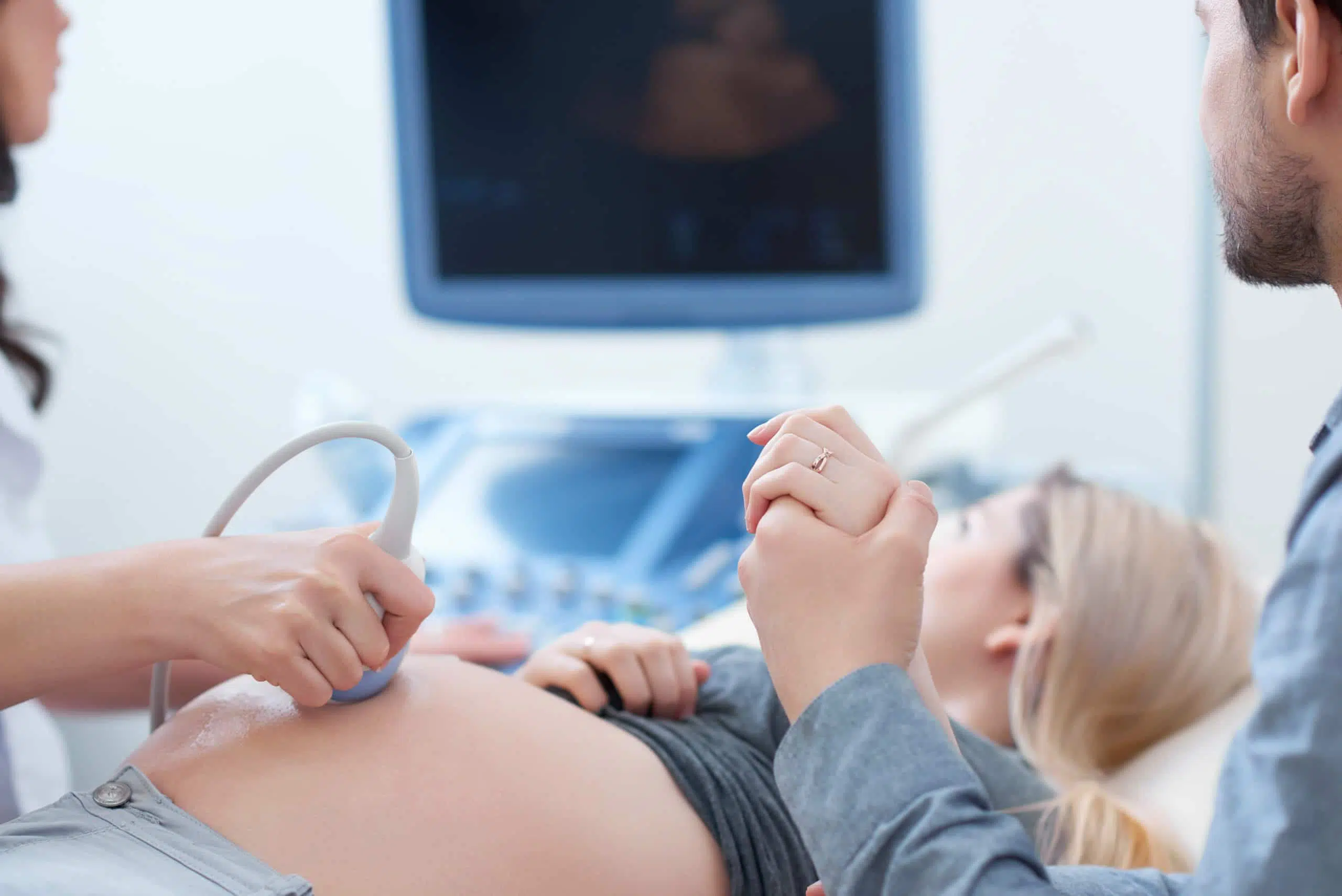

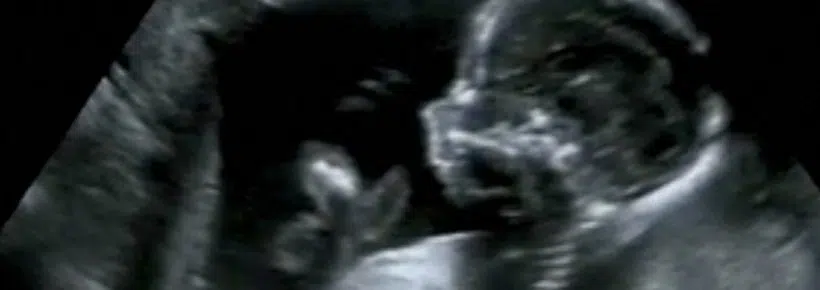
Compassion and empathy remain emotions intended for the victim, in this case, the unborn child. During publicized court cases today, compassion and empathy are displayed for a well-liked teen who succumbed to peer pressure, drank too much, and killed an innocent person in a wreck. Compassion and empathy are discussed when violence is perpetrated by someone abused as a child. Compassion and empathy are hot button words on social media, where victims’ voices are overwhelmed by excuses for the accused. Compassion and empathy are first maintained for the innocent, the victim, the future son or daughter, and then for the millions of women who struggle with depression, anxiety, fear, anger and regret. Have some compassion on the sad woman in her 40’s, the depressed father who sees in his children the face of his never-first-born. Abortion-minded women have safe, peaceful, compassionate options that ensure a decision made out of fear does not create a lifetime of regret. Flutters matter because flutters declare life. In fact, when that flutter is quieted naturally, we call that a “miscarriage.” To snuff out the flutter intentionally remains a decision I cannot support.
If one cares enough to do the necessary research to have an actual conversation, not a debate, one must listen to all sides of an issue. From a scientific and medical perspective, an electronic “flutter,” which is not a heartbeat, can be detected at 6 weeks. This flutter happens because the group of cells that will become the future pacemaker of the heart gains the capacity to fire electrical signals. There is no brain, there are no organs, and there are no limbs. It cannot be a heartbeat because the heart has not yet begun to form. Up until about 8 weeks, a fertilized egg is still considered an embryo, not a fetus. The vessel that will eventually become the heart and will pump blood is not formed until another 4 to 6 weeks when the tissue and muscle that forms the heart begin taking shape. Therefore, there is no heartbeat where there is no heart. Which isn’t formed until near the end of the first trimester. Most of the information contained in this article is inaccurate at best. My question is, where is the humanity for the women who are the victims of forced birth laws? No one and I mean no one, wants to have an abortion. It is not a form of birth control, and it is a traumatizing event for any woman to go through. Have some compassion for the women who have to decide either to save their own life or keep their unborn child from suffering.
Whether the heart is fully formed or is in formation doesn’t negate the fact that there is a human being in development in the womb. We have all started our lives in the same manner. Ask any person alive whether they wish they were aborted. No one would agree. Abortion is never necessary to save a woman’s life. If she needs a life-saving procedure and the baby should die as a result of the procedure, it is not abortion. It’s a sad and unintended consequence. We should always want to save them both. There is far more humanity in helping a woman to give birth and adopt, or offering her the support she might need to keep her child, than there is in ending an innocent life through abortion.
Hi, I am someone who genuinely wishes they could’ve been aborted! Living a life of suffering in a society that does not offer reliable fundamental needs for single mothers and their children was not a life I would have chosen to live had I had the choice. Unfortunately, I was a fetus with no sense of being a human before I was born so I did not have the choice. So before you just assume that everyone who is alive is happy and loves life, you should probably expand your horizons and talk to people who are not protected by the systems—people who have had to unlearn all of the “love life regardless of suffering” rhetoric. There isn’t a single person in this world who wants to go through the disproportionate amount of suffering caused by every facet of society, but those who are “okay” with it have been taught from a very young age to ignore their feelings and “get over it”, so naturally they believe their lives are worth living because they have detached themselves from their emotions and deluded themselves into believing the world is a place worth living in, when the truth is it is absolutely not. Unless you are white, rich, evangelical, or some other form of privileged, the world is a dark and disturbing place full of suffering that can absolutely be changed by those who have the power. But it’s them and people like you, who do not care about our lives. Only your own lives, and the lives of hypothetical “babies” that—in reality—have a higher chance of having a life of suffering than one full of happiness.
Life does NOT begin at conception. thats the most RIDICULOUS thing ive ever HEARD. Try getting brain damage see how much of yoru LIFE remains in your vessel. whether you believ in a soul or not. a human being has to be able to HOUSE the spirit. this means a significant amount of biological STRUCTURE to house your life and being. which doesnt EXIST in an early fetus. its debateable WHEN and over what PERIOD your being or soul enters and remains HOUSED and grows USED to the body that is developing. THAT is an INTERESTING conversation and one to find the answer to as humans learn more about how life enters and leaves our bodies. conception is NOT a human being. neither is a dead BODY, nor is SPERM or EGGS which regulalry leave our bodies as humans. the MOMENT those two meet, there isnt LIFE. again, go ahead and reduce your body to a bunch of living cells and see how much of YOU remains. a body HOUSES life. conception is too far from that point of developing a body. to house life.
The science of when human life begins is very clear. When sperm meets egg, a genetically distinct human organism is formed and begins his lifelong journey of growth and development. For a detailed explanation, check out this 6-minute video from Catholic Answers: https://www.youtube.com/watch?v=8wURL0rVLbY.
Technology needs to be invented that will sustain and grow a fetus outside of the womb from the moment it becomes classified as a fetus; then there will be no need for abortions, but only transfers of responsibility for the life outside from the mother into the responsibility of the State to maintain and grow the life into its full gestation through any means possible/invented.
Call it an “eviction” rather than abortion, and the responsibility for protecting an evicted fetus will be the burden of the State.
If a woman does not want another life living in her body for a 9 month gestational term, there needs to be the right of “eviction” of an unwanted fetus/life from her body beginning from the 2nd Trimester, and let it be the burden of the state to maintain the life.
I think that the heart beat is there to support another form of life which is the nervous system with blood , which means that the heart is not the first sign of life but the nervous system .
“The law does, however, unfortunately make an exception if the abortion is “necessary” to protect the mother whose life “is endangered by a physical (but not psychological or emotional) disorder, illness or condition.””
This makes me sick to my core. You’d rather have a mother die than a bundle of cells that can barely be described as an individual life, one that won’t be more capable of suffering more than any, say, chicken for many months?
I am so confused, I am so sickened. How can this be described as love, as kindness? This is brutal.
F, If a mother needs a life saving procedure, she can have it. There doesn’t need to be an exception in the law. If the baby dies as a result of the life saving medical care of the mother, it’s not considered an abortion. His death is sad but not intended. The doctor and all involved always wish to save them both.